Dr. Ilias Bilionis is an Assistant Professor at the School of Mechanical Engineering, Purdue University. His research is motivated by energy and material science applications and it focuses on the development of generic methodologies for design and optimization under uncertainty, reliability analysis, model calibration and learning models out of data.
Unlike structural materials, tissues actively adapt to their environment by signaling networks between mechanical cues, cells, and chemicals across several temporal and spatial scales. The fundamental interplay between form and function, from the cell to the tissue level, gives rise to the complex mechanical behavior of living tissue. My research group uses the theory of solid mechanics and computational systems biology to characterize tissue response in relevant medical problems. One of our current projects consists of capturing and analyzing the deformations and stresses developed in tissues as a result of reconstructive surgery, then following up on patients to establish a quantitative correlation between mechanical stress and wound healing response. Another project is the study of morphogenesis, how malformations in the musculoskeletal system can arise from mechanical events, how these malformations can impact mechanical function, and how can we improve treatment from a mechanics standpoint based on mathematical modeling and simulation.
Dr. Weinong Wayne Chen's research interests are in the development of innovative dynamic experimental techniques and the dynamic characterization of engineering materials under extreme conditions. The research results from his group have been published in a book and over 160 journal articles.
Our research contributions are in advanced materials processing, specifically in scalable manufacturing of 0D-3D micro/nanostructures, laser matter interaction, and mechanical/physical property enhancement of materials, and all length scales phenomena and devices.
Dr. El-Azab’s research is in the area of defects and microstructure evolution in materials, including dislocation dynamics and metal deformation, radiation effects and defect disorder in materials, and computational methods in materials science. He and his students currently investigate dislocation patterns in crystal under monotonic and cyclic loading. Lately, they have been able to capture the famous dislocations cell structure and other dislocation patterns in fcc crystals. The figure shows dislocations cell in copper simulated by continuum dislocation dynamics. The panel to the left shows the pattern of the overall density under [001] loading, while the panels to the right show the contributions of dislocations of various Burgers vectors. This work shows that the mechanism of dislocation cross slip is critical for cell structure formation under high symmetry loading of crystals.
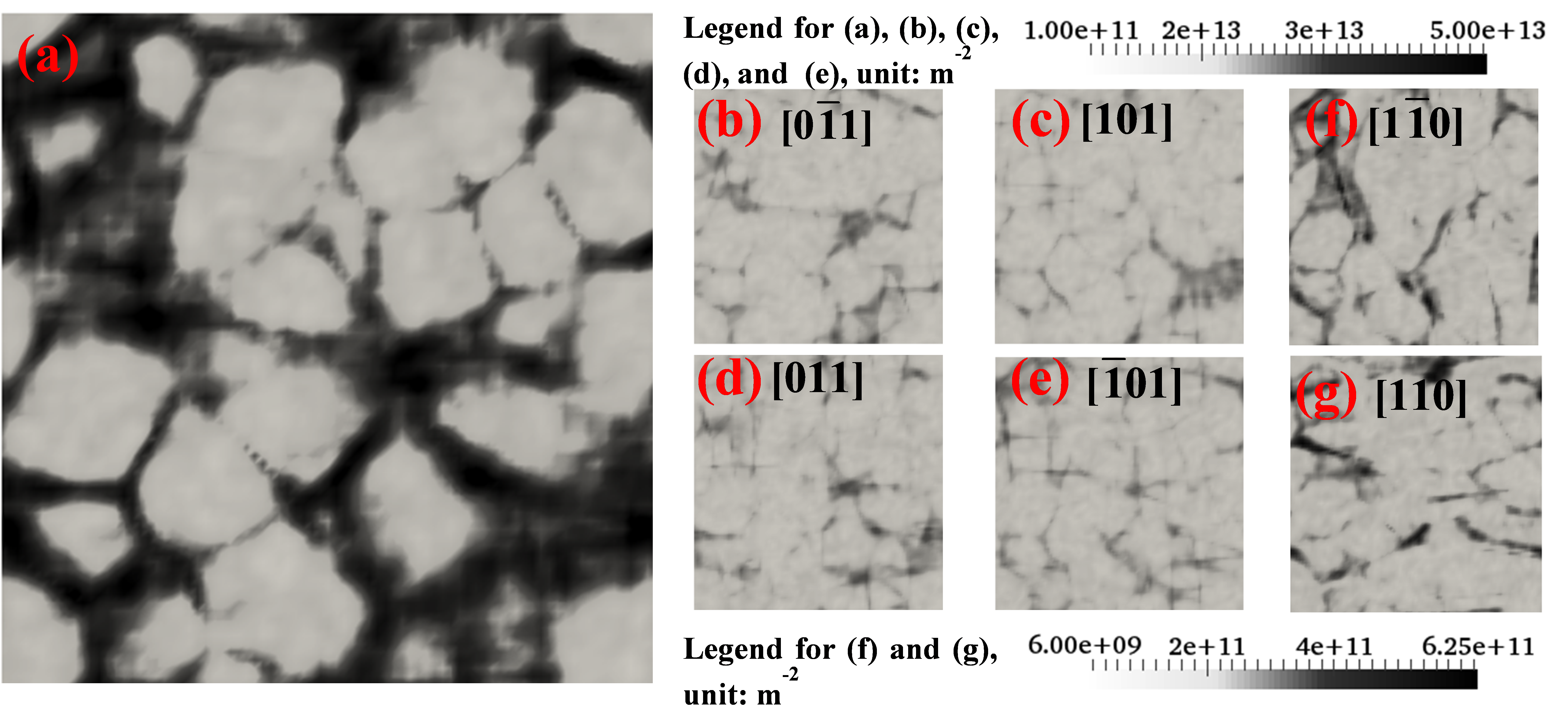
Dr. Goodsell’s research interests are in the field of validation of models for composites manufacturing and performance. In his role as Director of Validation in the Composites Manufacturing and Simulation Center, Dr Goodsell is establishing automotive manufacturing capability to complement the existing aerospace manufacturing facilities. Responsible for validation efforts include design and execution of validation experiments and simulations for composites manufacturing processes, including high-pressure resin transfer molding, laminate stamping, injection overmolding and autoclave molding. As Assistant Director of the Composites Virtual Factor HUB (cvfHUB) he is planning and coordinating the integration of commercial simulation codes to model composites manufacturing processes. As a member of the CMSC leadership team, he plans and coordinates efforts among 5 staff engineers and has responsibility for the manufacturing and testing laboratories. Current efforts are centered in the 5th NNMI, the Institute for Advanced Composites Manufacturing Innovation (IACMI), multi-state, multi-institution $260M+ program with $70M DOE funding.
Dr. Goodsell has also helped launch and lead the Composites Design and Manufacturing HUB, which was officially recognized as a Purdue Center in June 2014, and is currently supported by 5 industrial partners, including aerospace OEMs, materials suppliers and commercial simulation tool providers. The mission of the Composites Design and Manufacturing HUB (cdmHUB) is to accelerate the certification of aerospace products by analysis by advancing the number and “best practice use” of simulation tools for composite materials. He has become familiar with the functionalities and providers of the major commercial and academic simulation tools relative to composites manufacturing and performance and is leading efforts in education of the user community. He has assisted in developing and promoting a “Simulation Tool Taxonomy” with expert evaluations of commercial simulation tools. With Director R. Byron Pipes and Associate Director Wenbin Yu, Dr. Goodsell has planned and executed multiple industrial sponsor’s meetings and composites education workshops with participants from industry, government and academia. In collaboration with industry, he and Professor Wenbin Yu developed the “Micromechanics Simulation Challenge,” launched in January 2015. He has taken the cdmHUB to the world, promoting at major composites conferences and at workshops and industry gatherings. He is also guiding students in developing “Composites Apps” to codify knowledge in the form of simulation tools. He is the author, co-author or adviser of 9 simulation tools on the cdmHUB.
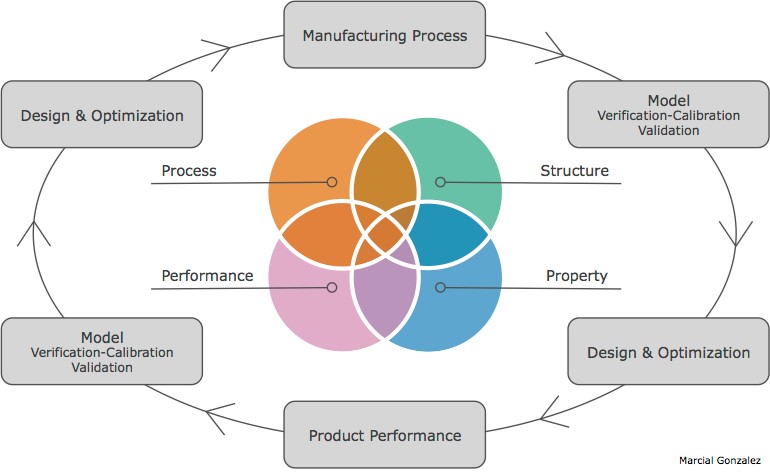
Dr. Marcial Gonzalez's current research focuses on predictive, multi-scale modeling and simulation of microstructure evolution in confined granular systems, with an emphasis in manufacturing processes and the relationship between product fabrication and performance. Application areas of interest include: (i) consolidation and compaction of ceramic, metallic, energetic and pharmaceutical powders, (ii) closed-loop model predictive control for continuous pharmaceutical manufacturing, and (iii) performance of pharmaceutical solid products (such as tensile strength, stiffness, swelling and disintegration) and of energetic materials (such as deformation and heat generation under impact and harmonic excitations, and formation and growth of hot spots).
Dr. Prakash's primary research interests are in Computational Solid and Structural Mechanics. He develops models and methods that are capable of simulating a wide variety of behavior of structures and systems. These include multi-scale models that can capture both global structural behavior and local material response, models that allow hybrid simulation of structures by combining physical test specimens and numerical models, and high-performance parallel implementations of these models.
Prof. Salgado's interests lie in geomechanics, foundation engineering, computational mechanics, constitutive modeling and offshore and energy engineering.
Michael D. Sangid received his B.S. (2002) and M.S. (2005) in Mechanical Engineering from the University of Illinois at Urbana-Champaign (UIUC). After his Master’s degree, Dr. Sangid spent two years working in Indianapolis, IN for Rolls-Royce Corporation, specializing in material characterization, fatigue, fracture, and creep of high temperature aerospace materials before resuming his education in 2007. He received his PhD in Mechanical Engineering from UIUC in 2010 and continued as a post-doctoral associate. At Purdue, he has continued his work on building computational materials models for failure of structural materials with experimental validation efforts focused at characterization of the stress/strain evolution at the microstructural scale during in situ loading.
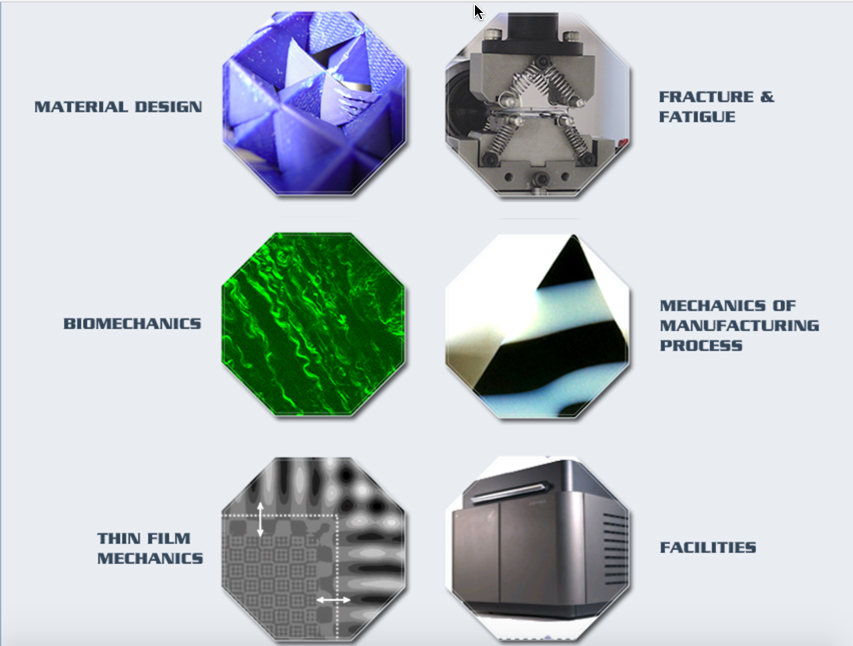
Thomas Siegmund conducts research in the Microstructure Testing and Analysis Laboratory. The mission of the Microstructure Testing and Analysis Laboratory is to advance the knowledge on mechanics of engineering materials and biological materials under consideration of micro-scale effects and processes. Furthermore, research is concerned with the relationships between microstructure, constitutive description, and the overall function of a microstructured structure. In this context we are actively conducting research in fracture and fatigue, bone biomechanics, materials design, and have previosuly worked on projects related to soft tissue biomechanics with focus on tissue active in phonation processes, digital materials manufacturing, and thin film mechanics.
The research carried out in the Hierarchical Design And Characterization (HiDAC) lab is broadly concerned with modeling, experimentally characterizing, simulating, and hierarchically designing structures and materials.
Dr. Vikas Tomar is a Professor in the School of Aeronautics and Astronautics. He earned his PhD in Mechanical Engineering from Georgia Institute of Technology in 2006. He worked as an assistant professor at the University of Notre Dame from 2006-2009. In 2009 he joined Purdue as an assistant professor where he was promoted to a full professor position in 2016. Dr. Tomar has made specific contributions in predicting role of interfaces and grain boundaries in failure of metallic alloys, ceramics, biomaterials, and polymer composites deployed in extreme environment applications such as high temperature, nuclear, extreme corrosion, high strain rate, and explosion/energetics. His approach has focused on experimental measurement of properties in extreme environments (high temperature, nuclear, corrosion, high strain rate, explosion/energetics) and incorporation of such measurements in in-house computational codes that interface well with various commercial and freeware codes. Dr. Tomar and his students have developed a new experimental paradigm based on nanomechanical and micromechanical Raman spectroscopy (US Patent issued). In this paradigm in-situ simultaneous measurements of nanoscale and mesoscale thermal, chemical, and mechanical properties in a material can be performed while the structure is being loaded ex-situ. The ability to perform combined measurements of nanoscale and micro/mesoscale properties provides an unprecedented platform where multiscale simulations predictions at two separate length scales can be linked via experimental observations in a single setting (e.g. measuring extreme environment interface properties and its influence on material failure in single setting). The simulation methods developed in his group include: (a) a new non-equilibrium Green’s function (NEGF) based formalism to understand the influence of extreme environment assisted phase transformation in nanostructured materials, and (b) a new variant of the cohesive finite element method (CFEM) to analyze microstructure dependent failure with an account of microscale and higher scale material and microstructural stochasticity. Dr. Tomar has won multiple awards for his work including AFoSR young investigator award, ASME Orr award, TMS early career faculty fellow-honorable mention award, and Elsevier Materials Science and Engineering Young Researcher award. He has written two books on mechanics of materials and edited multiple proceedings and journal special issues. He is an author of more than 100 international journal paper articles and book chapters with 90% of the article written solely with his undergraduate and graduates students. He is a Fellow of ASME and Associate Fellow of AIAA. In 2016 he became Purdue University Faculty Scholar. He is also Editor-in-Chief of Journal of Materials-Nanoscience and International Journal of Experimental and Computational Biomechanics. He is an associate editor of ASME-Journal of Engineering Materials and Technology and Journal of Mechanical Science and Technology. He is a key reader in Metallurgical and Materials Transactions A. The figure below shows an example of measurements performed using nanomechanical and micromechanical Raman spectroscopy and its connection with microstructural failure analyses predictions using the CFEM variant developed in his lab.
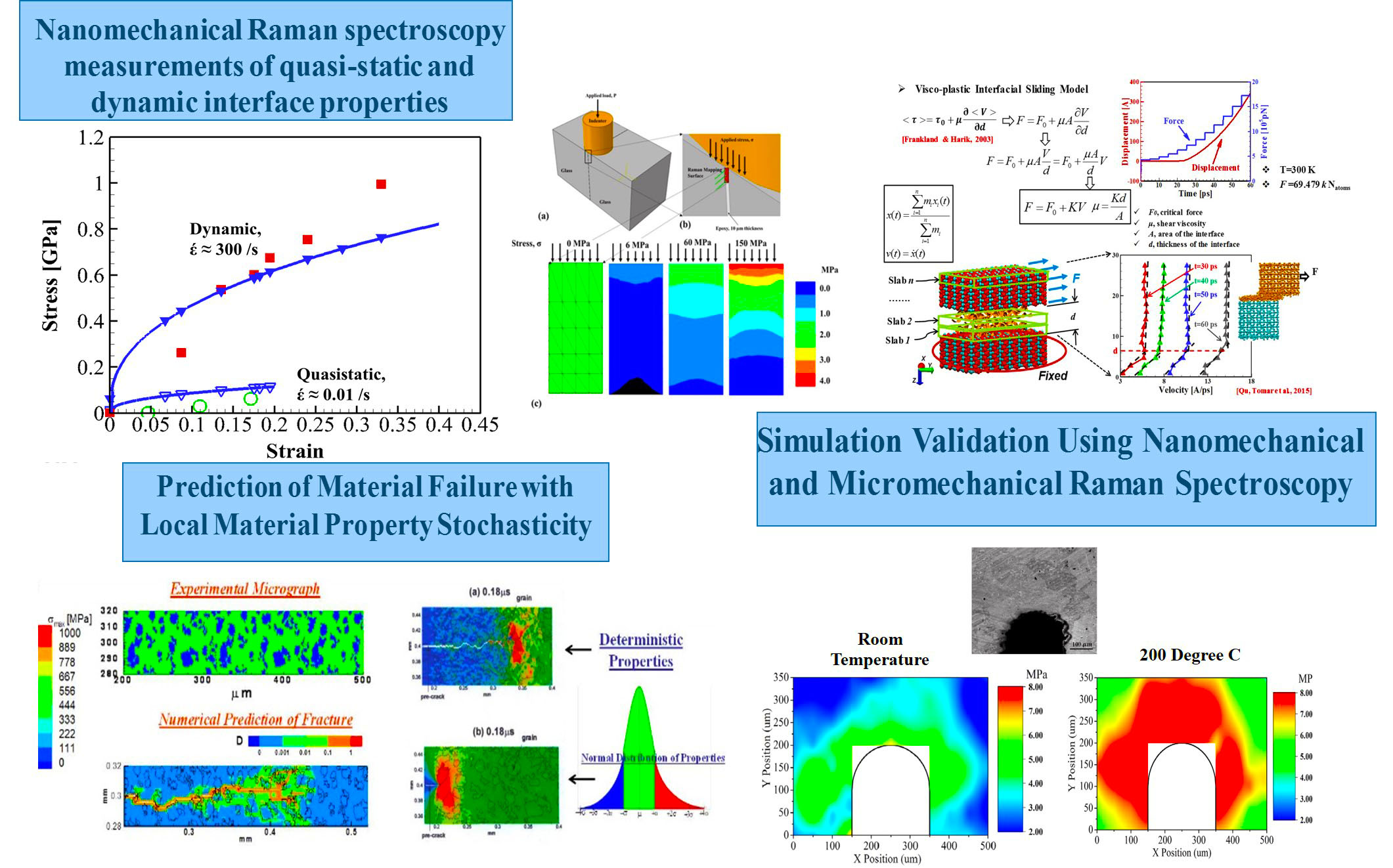

Dr. Wenbin Yu's expertise is in micromechanics and structural mechanics with applications to composite/smart materials. He has developed seven computer codes which are being used in government labs, universities, research institutes and companies. His research has been funded by both federal agencies and private industry. He has discovered the Mechanics of Structure Genome (MSG) which provides a unified approach for modeling of advanced materials and structures. MSG is implemented in SwiftComp (https://cdmhub.org/resources/scstandard), a general-purpose multiscale constitutive modeling code recently commercialized by Purdue Research Foundation.
Prof. Zhang's research interests are in nanostructured metallic systems (thin films and bulk); radiation damage in nanostructured metallic materials; nanotwinned metals, and hydrogen storage in nanostructured metals. He couples materials processing with characterization and nanomechanical testing on a wide range of nanostructured metals in both ambient and harsh environments. His research, over 170 papers, and descriptions of his group activities can be found at (https://sites.google.com/site/xzhanggroup/).
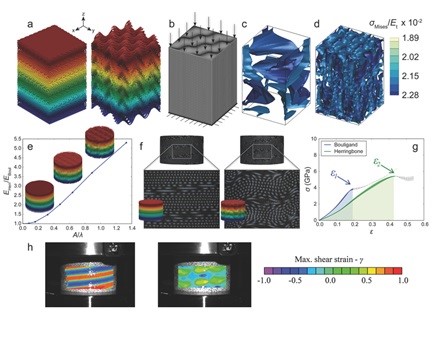
Dr. Zavattieri’s research interests lie at the interface between Solid Mechanics and Materials Engineering with focus on the development of novel materials that exhibit paradigm-shifting properties for various applications that can impact the general field of infrastructure and lightweight structural materials. His contribution to solid mechanics has been focused on the structure-function relationship of advanced materials at multiple length-scales, combining state-of-the-art computational techniques and experiments to characterize the properties, and enabling the design of novel materials. His early work on micromechanical models for materials has provided a robust framework for combined computational/experimental investigations of polycrystalline materials. His contribution to fracture mechanics includes the development of a new fracture models for thin-walled structures and their implementation in commercial finite element codes. He also made contributions in the area of smart materials, structures and smart composites (with a total of 10 patents and 5 other published patent applications). He has recently worked on solid mechanics problems related to biological and biomimetic materials. He pioneered the use of the 3D printing technology for the fabrication of scaled-up biomimetic composites and its combination with theoretical/computational models and experiments to unveil the most important toughening mechanisms found in some of most impact resistant natural materials. His most recent work is focused on architectured metamaterials, smart and programmable materials.
Dr. Kejie Zhao's research interests include mechanics of energy materials, high-temperature ceramics, and nanotwinned metals. His group is using atomistic modeling, continuum theories and finite element modeling, and in-situ experiments to characterize deformation, stresses, plasticity, and fracture of materials coupled with mass transport and electrochemical reactions.